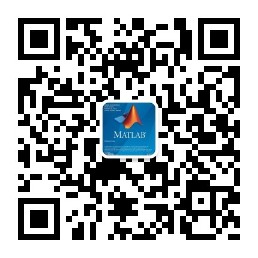博文
[转载]【信息技术】【2019.05】显微图像的配准、合成与分割
||
本文为美国普渡大学(作者:Chichen Fu)的博士论文,共124页。
荧光显微术已经成为研究细胞生物学的有力工具,因为它能够获得深入组织的三维图像和复杂亚细胞结构的成像。荧光显微镜图像经常因动物呼吸和心跳引起的运动而失真,这使得生物结构的定量分析复杂化,而生物结构需要表征组织体积的结构和组成。
本文描述了一种双管齐下的定量分析方法,包括非刚性配准和深度卷积神经网络分割。提出的图像配准方法能够校正三维荧光显微图像中随时间变化的运动伪影。特别地,我们的方法使用基于3D B样条的非刚性配准,使用从粗到精的策略来配准在不同时间间隔采集的图像,并使用4D刚性配准来随时间配准3D体积。结果表明,该方法能够在四维空间中校正样本组织的整体运动伪影,从而揭示组织中单个细胞的运动特性。在论文中,我们描述了使用深度卷积神经网络的细胞核分割方法、生成不同形状和对比度的训练图像的数据增强、结合体积中水平面、正面和矢状面分割结果的细化过程以及枚举细胞核的分水岭技术。结果表明,与三维真实数据相比,该方法能成功地分割并对三维核计数。在此基础上,提出了一种基于空间约束循环一致对抗网络的显微图像合成方法,有效地生成训练数据。采用骰子损失和二元交叉熵度量相结合的方法训练了一个改进的三维U-Net网络,实现了核的精确分割。利用多任务U网络求解重叠核。该方法可以实现高精度的基于对象和基于体素的评价。
Fluorescence microscopy has emerged as apowerful tool for studying cell biology because it enables the acquisition of3D image volumes deeper into tissue and the imaging of complex subcellularstructures. Fluorescence microscopy images are frequently distorted by motionresulting from animal respiration and heartbeat which complicates thequantitative analysis of biological structures needed to characterize thestructure and constituency of tissue volumes. This thesis describes a twopronged approach to quantitative analysis consisting of non-rigid registrationand deep convolutional neural network segmentation. The proposed imageregistration method is capable of correcting motion artifacts in threedimensional fluorescence microscopy images collected over time. In particular,our method uses 3D B-Spline based nonrigid registration using a coarse-to-finestrategy to register stacks of images collected at different time intervals and4D rigid registration to register 3D volumes over time. The results show thatthe proposed method has the ability of correcting global motion artifacts ofsample tissues in four dimensional space, thereby revealing the motility ofindividual cells in the tissue. We describe in thesis nuclei segmentationmethods using deep convolutional neural networks, data augmentation to generatetraining images of different shapes and contrasts, a refinement processcombining segmentation results of horizontal, frontal, and sagittal planes in avolume, and a watershed technique to enumerate the nuclei. Our results indicatethat compared to 3D ground truth data, our method can successfully segment andcount 3D nuclei. Furthermore, a microscopy image synthesis method based onspatially constrained cycle-consistent adversarial networks is used toefficiently generate training data. A 3D modified U-Net network is trained witha combination of Dice loss and binary cross entropy metrics to achieve accuratenuclei segmentation. A multi-task U-Net is utilized to resolve overlappingnuclei. This method was found to achieve high accuracy object-based andvoxel-based evaluations.
1. 引言
2. 4D图像配准
3. 核体积合成
4. CNN核分割
5. 体图像数据的分布式网络化分析(DINAVID)
6. 总结与展望
更多精彩文章请关注公众号:
https://blog.sciencenet.cn/blog-69686-1297088.html
上一篇:[转载]【无人机】【2008.09】用于小型无人机目标定位的轨迹优化
下一篇:[转载]【计算机科学】【2017.06】室内智能体定位中的传感器融合与深度学习